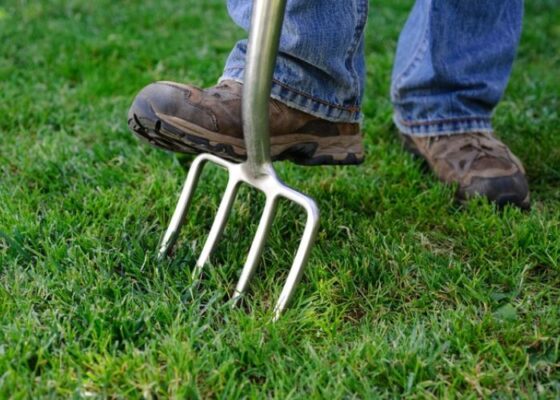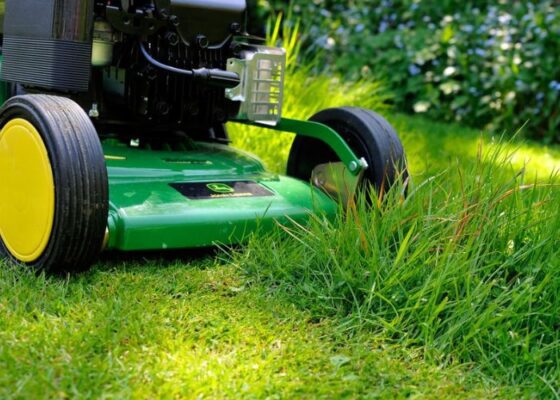With over 7 years as a professional landscaper focused on organic lawn care methods, I’ve learned quite a few tricks for getting lush, green grass without using harsh chemicals. As we transition into fall here in [your city/state], now is the perfect time to prep your lawn for health and growth next spring. Read below about “Expert Tips to Boost Lawn Quality Without Chemicals This Fall”.
In this article, I’ll share my top organic lawn care tips for the fall so you can have the best looking yard on the block!
Table of Contents
Why Fall Lawn Care Matters

You may be tempted to neglect your lawn once summer ends and the weather cools down. But fall is actually one of the most important times for lawn care. The work you put in now will pay off with thicker grass, fewer weeds, and a vibrant green color next year.
Here’s why:
- Fall fertilization strengthens grass roots before winter dormancy. This leads to faster green-up in spring.
- Core aeration relieves soil compaction so oxygen, water and nutrients can better reach grass roots.
- Overseeding fills in thin or bare spots to thicken up your lawn over time.
- Leaf removal prevents grass suffocation and disease over the winter months.
When you focus on these key tasks in the fall, you’ll give your lawn the best shot at emerging lush, green and healthy in the spring. No chemicals required!
My Top Organic Fall Lawn Care Tips
After caring for hundreds of lawns over my career with only organic products, I’ve dialed in a simple fall lawn care plan that works wonders. Here are my top 7 tips:
Fertilize With Compost and Organic Fertilizer
Synthetic quick-release fertilizers can burn grass and leach into groundwater. That’s why I recommend organic slow-release fertilizers in the fall. I’m a big fan of compost, alfalfa meal, corn gluten meal, and bone or blood meal.
Compost feeds beneficial microbes and worms that naturally enrich soil. The meals provide a slow, steady release of nitrogen and minerals to strengthen roots before winter. I apply 1/4 inch of compost plus a blend of meals in mid-fall.
Dethatch and Aerate For Better Oxygen Circulation
Thatch buildup and soil compaction are two big obstacles to healthy grass. Dethatching with a rake removes the dead grass layer so air, water and nutrients can better reach roots and soil. Next, core aeration pokes holes to allow better oxygen circulation.
I dethatch and aerate lawns every fall, which leads to stronger grass plants and a lush lawn. It’s labor intensive but well worth it!
Overseed Bare or Thin Areas
If your lawn has noticeable bare or thin patches, fall is prime time to overseed and thicken it up. I spread a mix of shady or sunny grass seeds in problem areas, then water gently daily until new seedlings are about 3 inches tall.
Overseeding combined with the other lawn care steps leads to impressive fill-in results over time. This fall, I’m overseeing a client’s lawn that was more weeds and dirt than grass. After just 2 fall seedings, it’s nearly a continuous lush lawn!
Apply Corn Gluten Meal for Natural Weed Prevention
Corn gluten meal is an organic pre-emergent herbicide that inhibits weed seeds from sprouting, though doesn’t affect established weeds. I apply it every fall to build up a barrier in the soil against next year’s weeds.
After 3 years of annual corn gluten applications, most client lawns have dramatically fewer weeds in spring. And any that do pop up are easy to spot and pull when the grass is thicker. It’s natural, pet safe weed prevention the whole year!
Blanket the Lawn With Leaf Mulch
Fall leaves can smother and kill grass when left to pile up. But they’re actually free fertilizer and weed blocker if used properly! I mow over leaves to create a nutrient-rich protective layer. Or, I rake leaves onto flower beds as winter mulch.
The shredded leaf bits left on the lawn break down over winter to feed the soil, similar to compost. Come spring, pull back the leaf remnants to reveal vibrant green grass!
Set Your Mower Deck to the Proper Fall Height
Letting grass grow taller in fall shades soil, insulates roots and promotes deeper root growth. I set mower decks to 3 or 3.5 inches through late fall. The extra height prevents grass damage while allowing more photosynthesis for stronger plants.
Come spring, I gradually lower the cutting height back to max 2.5 inches for lush, even growth. The higher fall setting makes a visible difference in root health and cold tolerance.
Water Deeply But Infrequently
Soil drying is a good trigger for grass roots to grow deeper before winter. But drought stress can leave lawns vulnerable to extreme cold. I recommend occasional deep waterings if rain is lacking, while avoiding frequent shallow sprinklings.
Aim to moisten the top 6 inches of soil, then let the lawn fully dry out before soaking again. I use a screwdriver test—if it pushes in easily 6 inches down, there’s adequate moisture. If not, it’s time for a deep drink!
The visible payoff next year from following these organic methods each fall is extremely satisfying. I hope these tips give you the confidence boost to say no to chemicals and embrace natural lawn care!
Still Have Lawn Care Questions?
If you made it this far, congratulations! You now know more about organic fall lawn care than 99% of homeowners. But you might still have some questions…
- When exactly should you apply fertilizer and seed in the fall?
- How do you know if you have unhealthy thatch buildup?
- What type of compost is best for lawns?
- Could soil testing influence your fall lawn care plan?
- What grass varieties perform best in your area?
As an experienced landscaper focused on eco-friendly practices, I’d be happy to offer free advice about your specific lawn care challenges. I also provide organic treatments for clients in the [Your City, State] area, if you’re interested in a free quote. I hope you like reading “Expert Tips to Boost Lawn Quality Without Chemicals This Fall”.
Please feel free to get in touch using the contact form below or calling [Your Phone Number]. I look forward to helping you achieve your dream lawn the natural way!

I am Monica, the enthusiastic explorer behind funthingsworld.com. With a degree in Leisure and Recreation Management and over 5 years of diving into thrilling adventures, I’ve made it my mission to uncover the best and most exciting activities around the globe.
Stay connected and get a sneak peek into my adventures on Instagram: @mongjerde











